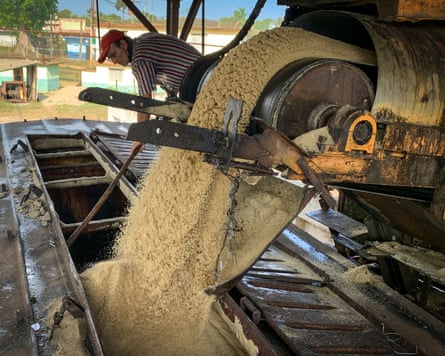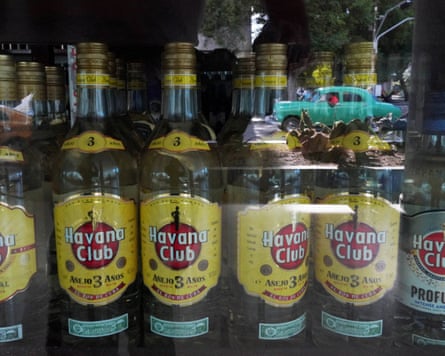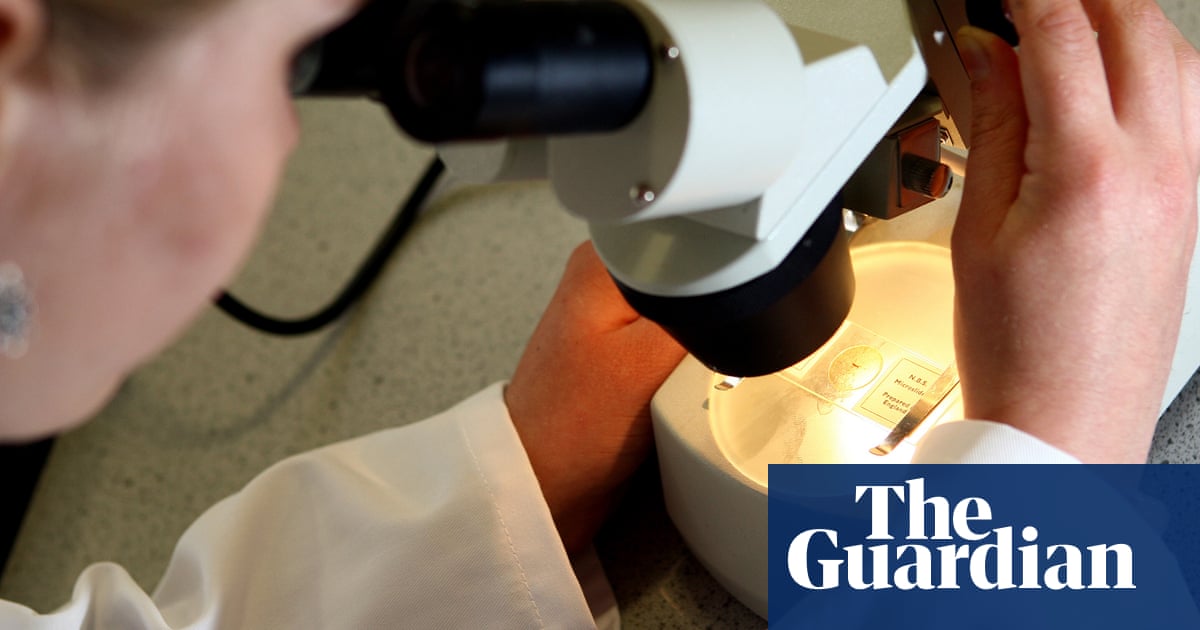It’s a crisis that would have sent a shiver down Ernest Hemingway’s drinking arm. Cuba’s communist government is struggling to process enough sugar to make the rum for his beloved mojitos and daiquiris.
As summer rains bring the Caribbean island’s 2025 harvest to an end, a recent analysis by Reuters suggests that Cuba’s state-run monopoly, Azcuba, is likely to produce just 165,000 metric tonnes of sugar this year. That compares with harvests of 8m in the late 1980s.
Michael Bustamante, chair of Cuban and Cuban-American Studies at the University of Miami, described the situation as “dismal”. “You have to go back to the 19th century to find numbers this low,” he said.
Cuba is in the grip of an all-encompassing economic crisis, and for the past few years has been importing sugar to feed its people, but rum producers do not have the luxury of importing. “The regulations provide that all the liquids have to come from within the country,” an industry executive said, speaking anonymously.
It is particularly worrying because the island’s rum industry has been a rare bright spot in its economy. Big international luxury brands are involved, competing in world markets with distinctive Cuban spirits.

Diageo, LVMH and Pernod Ricard all have ventures with the government in Havana, often involving tortuous legal structures to placate OFAC, the US Office of Foreign Assets Control, which polices Washington’s six-decade-plus trade embargo against the island.
These companies – and a small British/Norwegian upstart called the Island Rum Company – have invested heavily in their respective brands: Ron Santiago, Eminente, Havana Club and Black Tears. Now there are concerns about their prospects. “It is threatened,” said the executive.
Rum as we know it was invented in Cuba in 1862 when a shopkeeper in the coastal city of Santiago thought he could do better than the rot gut then produced in pot stills on the country’s plantations worked by enslaved people. His name was Facundo Bacardí.
He began using column stills to distill molasses, a byproduct of sugar refining, selecting the aguardiente liquor on the edge of the pure alcohol, before ageing it in oak. His family, and the rum they produced, became the most famous in Cuba, until they were forced out in the Castro brothers’ 1959 revolution.
The Castros wanted Cuba to be financially independent of other countries, a never-ending issue for the island, and sugar was at the heart of their plans. In 1970, they mobilised 500,000 volunteers to create a 10m-tonne harvest.
The effort fell short, but at least until the late 1980s Cuba produced around 8m tonnes a year. There was always a lack of investment in the machinery, though, which the government blames on the US embargo.
Now the 133 mills at the time of the revolution have been reduced to 14, and only six reportedly still operate. “The sugar production numbers have been steadily decreasing for the better part of 20 years, but particularly over the last five,” said Bustamante. “I think it’s just as clear a signal as you can get over the dire straits of the economy overall.”

The Enrique Varona sugar mill is in the settlement of Falla, around halfway along the island’s length. On a recent visit, the workers looked exhausted as they lathed a heavy bit of metal in the hope of keeping the great mill running.
In contrast, Pernod Ricard’s distillery south of Havana is modern and slick. The French drinks company was the first of the big foreign operations to arrive, doing a deal with Corporación Cuba Ron, the state producer, in 1993. In return for an agreement not to allow other competitors in for 20 years, it took over the Havana Club brand, building sales from 300,000 cases to more than 4m.
“They made a huge investment in a moment in which no one had the guts to invest in Cuba,” said Luca Cesarano, who until recently ran the rival brand of Ron Santiago.
With the end of that agreement in 2013, others such as Diageo arrived. Unlike Pernod Ricard, they were not distilling themselves, but employing rum makers – known as maestros – to make specific spirits in Cuba’s state distilleries.

They were also using historical collections of rum that the maestros had for years been storing in oak barrels across the country, even as the roofs of their bodegas grew full of holes.
These high-end products have fed an international resurgence in rum. LVMH, the luxury powerhouse, arrived to make Eminente, creating the Hotel Eminente in Paris to promote it. The Island Rum Company has found a strong following in Cuba and abroad by associating itself with young Cuban musicians (its Black Tears brand takes its name from a Cuban song, Lagrimas Negras).
But with the supply of molasses drying up, all this work is threatened. “I think the fourth quarter will be particularly tough,” said the executive. “There won’t be any alcohol.”

 1 day ago
7
1 day ago
7

















































